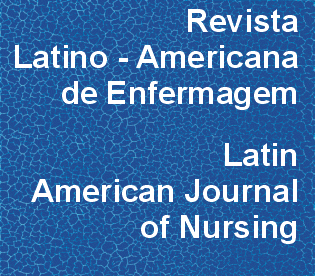Factors associated with the frailty syndrome in elderly individuals living in the urban area
DOI:
https://doi.org/10.1590/0104-1169.0213.2493Abstract
METHODS: this cross-sectional, observational and analytical household survey was conducted with 958 elderly individuals living in the urban area. The Brazilian version of the Functional Assessment Questionnaire and Multidimensional Scales (Depression, Katz and Lawton brief geriatric versions) were used, together with the Phenotype of Frailty developed by Fried. Descriptive analysis was performed along with a bivariate and multinomial logistic regression model (p<0.05). RESULTS: a total of 313 (32.7%) non-frail elderly individuals were found in addition to 522 (55.4%) pre-frail and 128 (12.8%) frail individuals. Factors associated with pre-frailty and frailty, respectively, included: being 70├ 79 years old and 80 years old or older; using 1├ 4 medications and 5 or more; greater number of morbidities, functional disability for instrumental activities of daily life, and negative self-perception. The absence of a partner was associated with pre-frailty while hospitalization in the last year, functional disability for basic activities of daily life and indication of depression were associated with frailty. CONCLUSION: pre-frailty and frailty conditions presented a percentage higher than that reported by Brazilian studies and are associated with health-related variables. These variables can be prevented with interventions directed to the health of elderly individuals.Downloads
Download data is not yet available.
Downloads
Published
2014-10-01
Issue
Section
Original Articles
License
RLAE’s authorship concept is based on the substantial contribution by each of the individuals listed as authors, mainly in terms of conceiving and planning the research project, collecting or analyzing and interpreting data, writing and critical review. Indication of authors’ names under the article title is limited to six. If more, authors are listed on the online submission form under Acknowledgements. The possibility of including more than six authors will only be examined on multicenter studies, considering the explanations presented by the authors.Including names of authors whose contribution does not fit into the above criteria cannot be justified. Those names can be included in the Acknowledgements section.
Authors are fully responsible for the concepts disseminated in their manuscripts, which do not necessarily reflect the editors’ and editorial board’s opinion.
How to Cite
Factors associated with the frailty syndrome in elderly individuals living in the urban area . (2014). Revista Latino-Americana De Enfermagem, 22(5), 874-882. https://doi.org/10.1590/0104-1169.0213.2493



